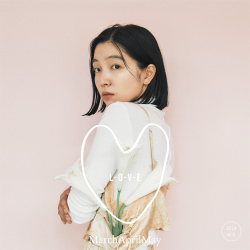
March 10, 2011
Le Surrealisme
The NACT takes a short-sighted, Francophone look at an international art movement
By Metropolis
Originally published on metropolis.co.jp on March 2011
 Before going any further, I just want to slag off the French government. While I can understand why they cherish their own language, why do they have to insist on the total suppression of English at any exhibition they have a hand in? Here in Japan, the catalogues, name plates, explanations—everything—is either in French or, as a special concession to the locals, Japanese. It’s almost as if Napoleon had succeeded in his attempt to conquer the World and impose Francophone culture on the rest of us—truly surreal! Which brings us to the exhibition itself.
Before going any further, I just want to slag off the French government. While I can understand why they cherish their own language, why do they have to insist on the total suppression of English at any exhibition they have a hand in? Here in Japan, the catalogues, name plates, explanations—everything—is either in French or, as a special concession to the locals, Japanese. It’s almost as if Napoleon had succeeded in his attempt to conquer the World and impose Francophone culture on the rest of us—truly surreal! Which brings us to the exhibition itself.
Sourced from the Pompidou Centre, an architectural carbuncle in downtown Paris, the show sets out to present a comprehensive survey of Surrealism. With its roots in Dadaism, which itself was a partial response to the madness of the First World War, Surrealism was a multimedia movement active from the ’20s to the ’40s that straddled painting, sculpture, photography, collage, filmmaking and poetry. Although centred in Paris, Surrealism was international in character, attracting foreign talent and spreading to many countries, including America, where most of the prominent Surrealists sat out World War II.
Meaning “beyond realism,” Surrealism was essentially a modernist, post-Christian reworking of the old European dichotomy of the spiritual and physical realms. The leader of the movement was the poet “Andrew” Breton (NB: in retaliation for the suppression of English at this exhibition, I have decided to Anglicize all French first names).
Breton saw himself as an almost pope-like figure in communion with a higher reality. Accordingly, the movement took onboard much of the mystical baggage of late 19th-century Spiritualism. For example, methods like automatism—the attempt to draw without conscious intention—derived from similar practices used in seances.
Also, just like religions, Surrealism was beset by sectarianism and “heresies” as more maverick members rejected Breton’s authoritarian control. The chief of these was Salvador Dali, who for many is the quintessential Surrealist painter. Sadly, he is only represented in this exhibition by two third-rate works. Other great non-French surrealists, like the German Max Ernst and the Italian Giorgio De Chirico, are also badly served, leading to the suspicion that the Pompidou is not only trying to reactivate our high school French, but attempting to impose a very Franco-centric picture of Surrealism. There is certainly no shortage of the often interchangeable works of the French painter “Andrew” Masson!
While Surrealism can often delight with its sense of the absurd and occasionally enlighten by its inspired insanity, this exhibition’s pedantic approach leeches much of the life out of the art. The movement is dryly dissected, with sections dedicated to the various techniques—the paranoiac-critical method (basically, visual punning), automatism, photomontage, etc.—and to the themes of the movement: mythology and desire.
Just as explaining a joke is the surest way to kill it, the method followed here is guaranteed to defuse Surrealism’s potent mysticism. The best thing is to completely ignore the way the exhibition has been organized. In fact, start from the exit and work your way to the entrance, and just allow the works to have their impact without reference to their Japanese and French crib notes.
I started with a complaint, so I’ll end with one. When we requested images to accompany this article, we ran into the SPDA, a Paris-based organization that enforces surreal strictures on the use of images which, like most of those here, are still under copyright. Despite the fact that art reviews tend to add value to exhibitions and artists by providing free publicity, the SPDA still requires a fee for any image used with an article over 400 words (this one, for example, is 650 words). For this reason, and also because the images available were far from the best ones in the exhibition, we have decided not to bother. Instead, you can feast your eyes on one of my paintings instead. How’s that for a surreal review?
The National Art Center, Tokyo
Until May 9, ¥700 (high school)/¥1,200 (univ)/¥1,500 (adult). 7-22-2 Roppongi, Minato-ku. Tel: 03-6812-9900. Open Wed-Mon 10am-6pm, closed Tue. Nearest stn: Roppongi, exit 4. www.nact.jp







